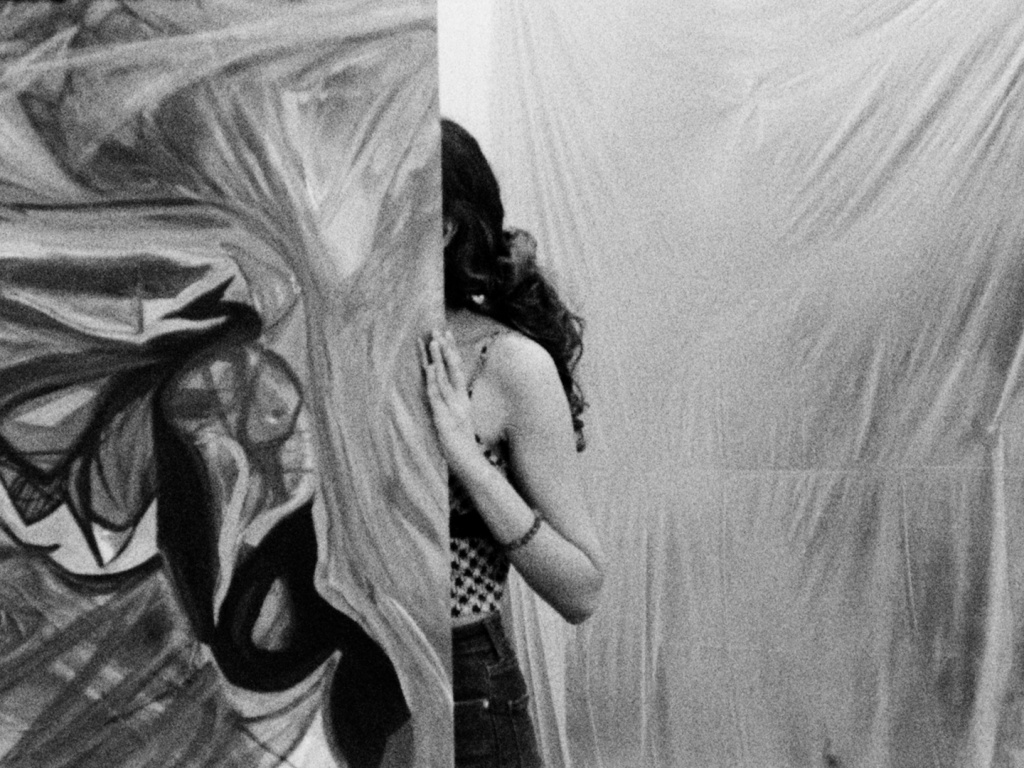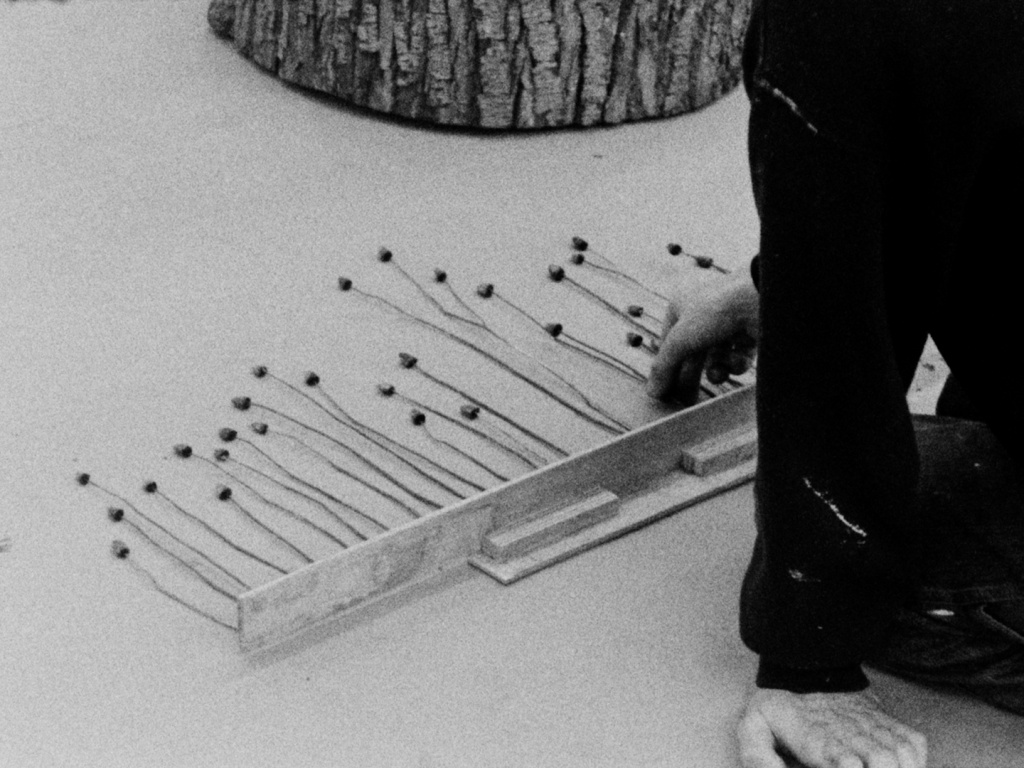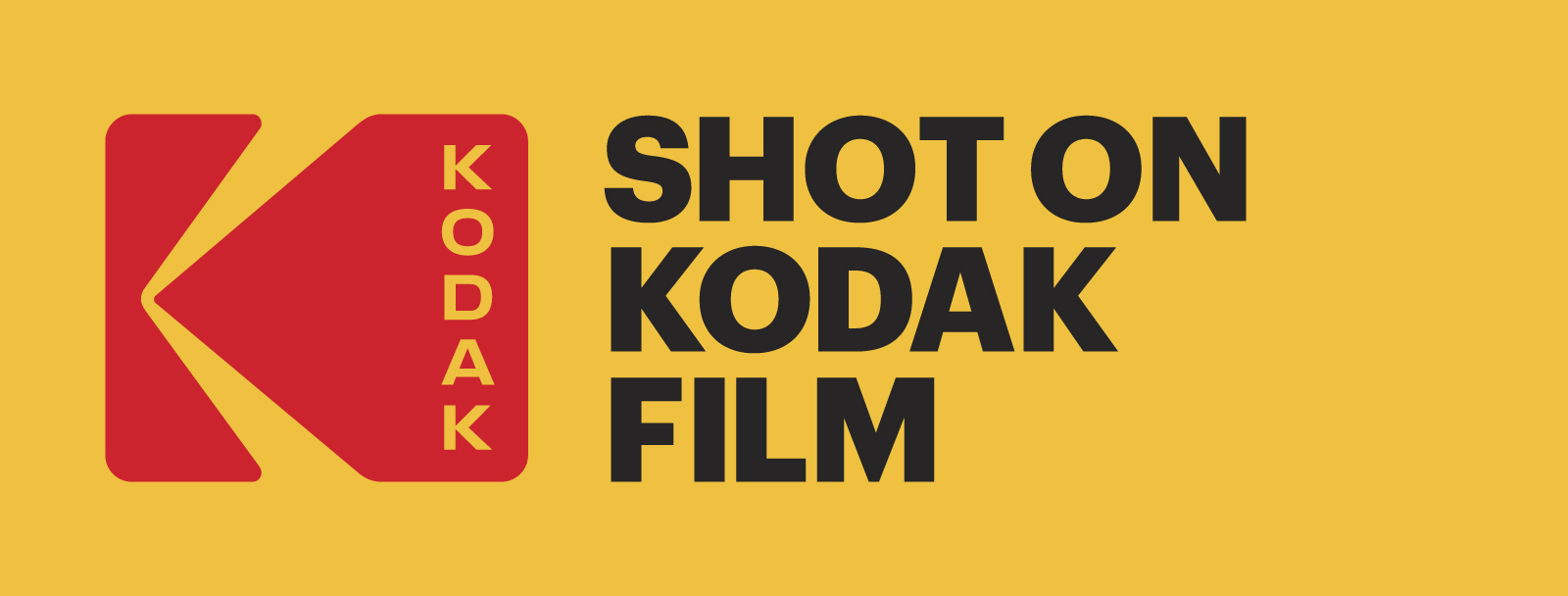Slade Degree Show 2023 documentation
For the second year running, the Slade’s initiative of providing students with 16mm film during the Degree Show installation period results in a unique time capsule of exhibiting graduates preparing to present their work to the public.

The Slade School of Fine Art maintains and teaches on 16mm cine cameras, and in the past few years Film & Media Technician Andrew Northrop and Associate Professor Jo Volley have sought to enable a new tradition where students capture preparations for the Undergraduate and Graduate Degree Shows on film.
This year, the initiative was supported by Kodak and the Slade’s own Material Research Project, allowing students to engage in celluloid filmmaking together in a shared project, without the associated financial barrier, and providing a valuable and unique learning experience.
The film will be deposited in the Slade’s archive, joining last year’s project, led by former student Niki Kohandel, who expressed a desire to see an ongoing, wider range of students represented in the collection, and whose film ...- then love is the name (2022), acts in part as a pre-cursor to the project.
This year’s participants were Uday Banerjee (Undergraduate Fine Art Media), Roman Sheppard Dawson (Graduate Fine Art Media), Lujain Mansour (Undergraduate Fine Art Media), Lily Petch (Undergraduate Fine Art Media) and Lianqi Yao (Graduate Fine Art Media). They captured a multi-faceted representation of student efforts at the Slade, from the hanging of paintings to the finishing of sculptures.
“Using 16mm film to document the degree show was an incredible experience,” says Uday Banerjee, “not just through the sense of freedom and play with the vintage equipment while capturing the constant activity in the building, but also in recording a specific moment in time - of collective effort to a common goal.”

Shooting on film often comes with a heightened sense of time, not just the focus on the passing of time as you shoot, but the time spent waiting for film to come back from the lab. As a result, memory is captured in a heightened way within the footage. “I was almost crying when I saw the people from last year,” Liangqi Yao reflects, “It felt like a flashback, really touching. I feel grateful that the film stores precious moments.”
This iteration of the project was shot equally on a Bolex H16 and an ARRIFLEX 16S, two cameras that encourage slightly different ways of shooting. A decision was made to shoot on black and white Kodak Double-X negative film, giving the footage, all shot in available light, deep contrast and an accentuation of how light crosses the various studio spaces.
